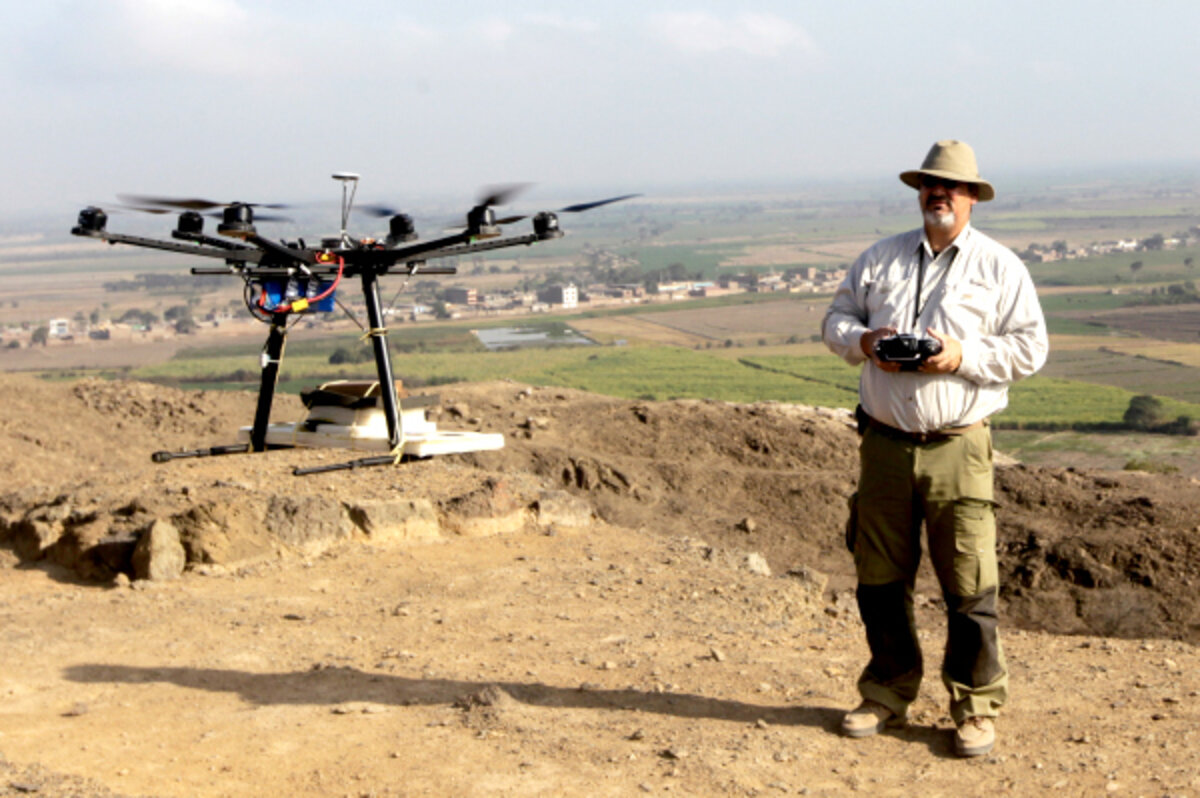Domesticating drones
Loading...
Military drones bring to mind an angry Zeus, the Greek god who hurls his lightning bolts from the sky at enemies below. But 2014 may be the year that drones take on more of the image of Hermes, the messenger and friend of commerce.
Amazon chief Jeff Bezos helped kick-start an ongoing conversation about a softer side of drones Dec. 1 when he introduced TV viewers to a delivery drone on CBS’s “60 Minutes” news show. Amazon’s “octocopter” could be delivering small packages to homes within a few years, he predicted.
On Monday the Federal Aviation Administration announced that it had approved six sites around the United States to begin testing commercial drones and exploring just what technological, legal, and logistical challenges they will present. The FAA expects test drones operated by the facilities to be in the air by mid-2014. Of course, it may be a decade or more before thousands are in regular use in US skies taking on a wide variety of missions.
Many questions still need answers. Can unmanned drones share airspace safely with both each other and manned aircraft, including airliners? Drones will need some level of artificial intelligence, in case they lose radio contact with the ground.
And what about privacy? What restrictions should be placed on the places drones can fly and the data they can collect?
These are important questions, and good answers must be found before widespread use is allowed.
Possible benefits to the US economy make drones more than a science-fiction curiosity and worthy of more research. One estimate predicts the drone industry will create 70,000 new US jobs by 2017. Another puts worldwide sales of drones, both military and commercial, as high as $89 billion within a decade.
The US Department of Transportation is also bullish on drones, projecting in one study that nearly 250,000 civilian and military drones will be in use in the US by 2035.
Far beyond being an exotic way to deliver a Kindle or a pizza, domestic drones could serve many useful purposes. They could inspect high-rise buildings or power lines for problems or check on a farmer’s field from above. And like ground-based robots, they could be used by fire and police departments to put eyes and ears into a dangerous location, keeping humans out of harm’s way.
The Internet now moves ideas around the globe at the speed of light. Drones promise to speed up the way physical objects move around and give people more knowledge about their world – if these high-flying unmanned messengers can be controlled by strong rules that guard safety and privacy.




